Efficient Online Subclass Knowledge Distillation for Image Classification
Maria Tzelepi,
Nikolaos Passalis,
Anastasios Tefas

Auto-TLDR; OSKD: Online Subclass Knowledge Distillation
Similar papers
Knowledge Distillation Beyond Model Compression
Fahad Sarfraz, Elahe Arani, Bahram Zonooz

Auto-TLDR; Knowledge Distillation from Teacher to Student
Abstract Slides Poster Similar
Knowledge Distillation with a Precise Teacher and Prediction with Abstention

Auto-TLDR; Knowledge Distillation using Deep gambler loss and selective classification framework
Abstract Slides Poster Similar
Feature Fusion for Online Mutual Knowledge Distillation
Jangho Kim, Minsung Hyun, Inseop Chung, Nojun Kwak
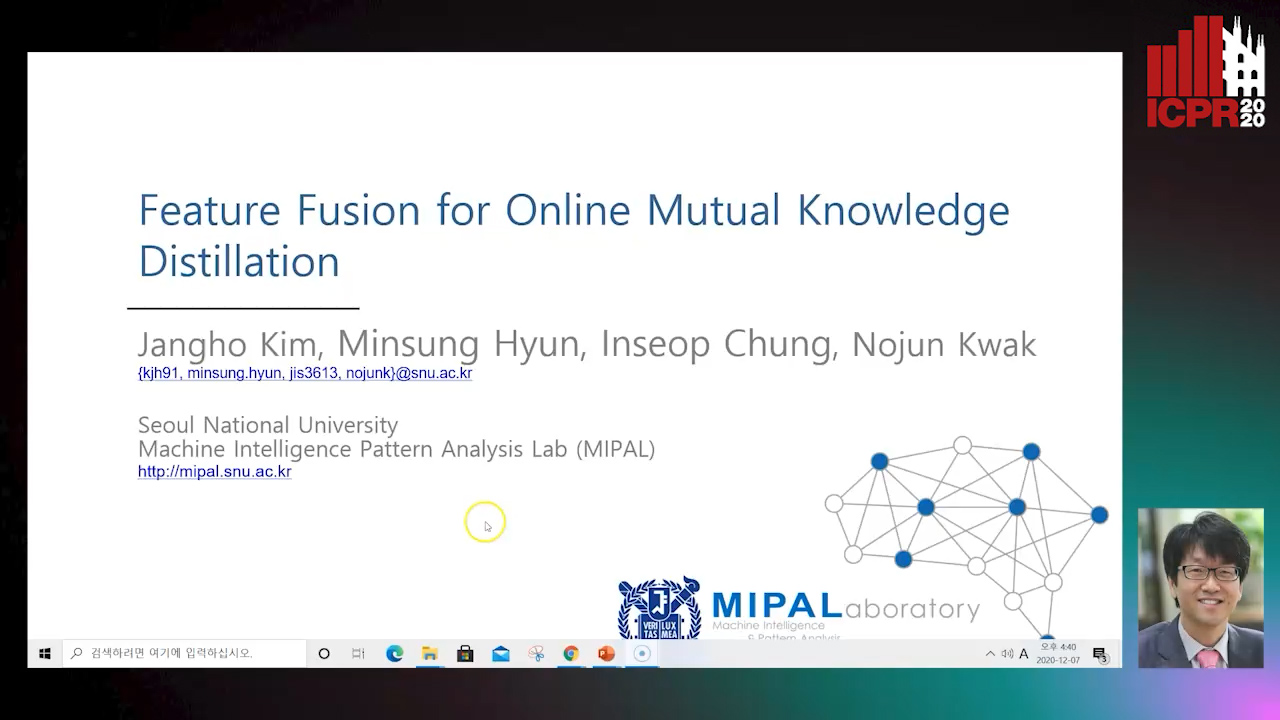
Auto-TLDR; Feature Fusion Learning Using Fusion of Sub-Networks
Abstract Slides Poster Similar
Compact CNN Structure Learning by Knowledge Distillation
Waqar Ahmed, Andrea Zunino, Pietro Morerio, Vittorio Murino
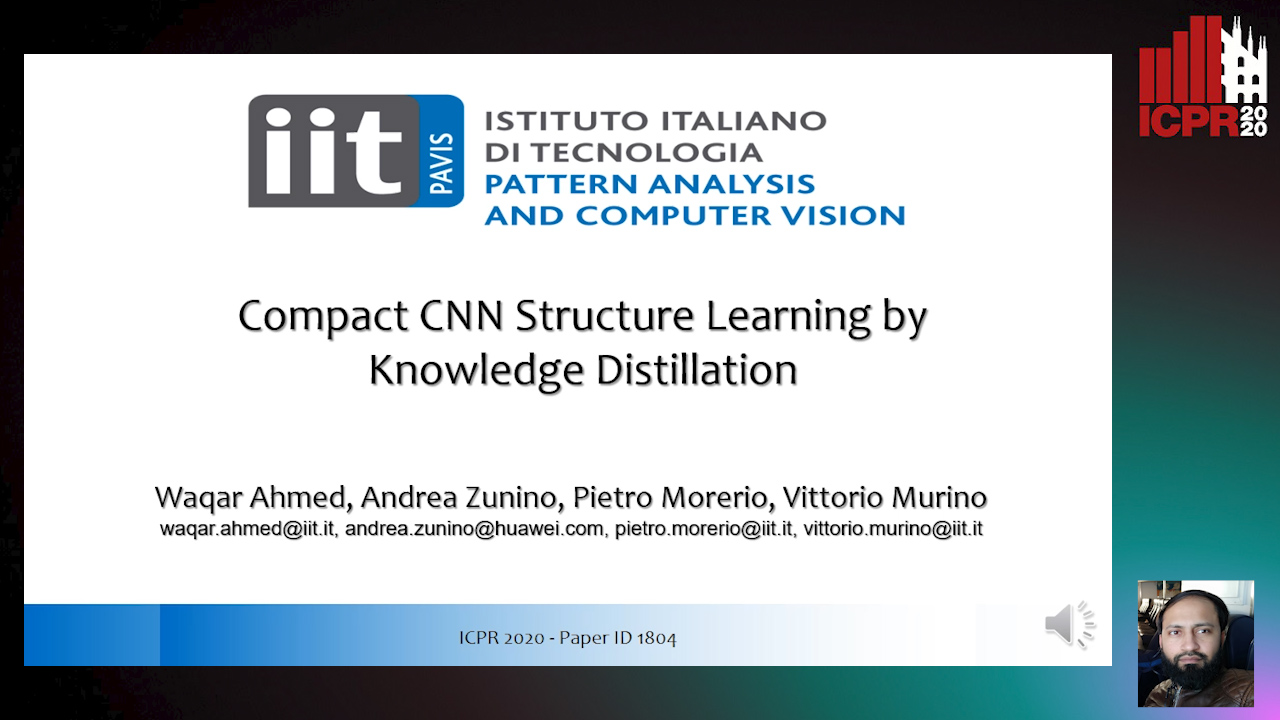
Auto-TLDR; Knowledge Distillation for Compressing Deep Convolutional Neural Networks
Abstract Slides Poster Similar
Distilling Spikes: Knowledge Distillation in Spiking Neural Networks
Ravi Kumar Kushawaha, Saurabh Kumar, Biplab Banerjee, Rajbabu Velmurugan

Auto-TLDR; Knowledge Distillation in Spiking Neural Networks for Image Classification
Abstract Slides Poster Similar
Channel Planting for Deep Neural Networks Using Knowledge Distillation
Kakeru Mitsuno, Yuichiro Nomura, Takio Kurita

Auto-TLDR; Incremental Training for Deep Neural Networks with Knowledge Distillation
Abstract Slides Poster Similar
Automatic Student Network Search for Knowledge Distillation
Zhexi Zhang, Wei Zhu, Junchi Yan, Peng Gao, Guotong Xie

Auto-TLDR; NAS-KD: Knowledge Distillation for BERT
Abstract Slides Poster Similar
FastSal: A Computationally Efficient Network for Visual Saliency Prediction

Auto-TLDR; MobileNetV2: A Convolutional Neural Network for Saliency Prediction
Abstract Slides Poster Similar
On the Information of Feature Maps and Pruning of Deep Neural Networks
Mohammadreza Soltani, Suya Wu, Jie Ding, Robert Ravier, Vahid Tarokh

Auto-TLDR; Compressing Deep Neural Models Using Mutual Information
Abstract Slides Poster Similar
Adversarial Knowledge Distillation for a Compact Generator
Hideki Tsunashima, Shigeo Morishima, Junji Yamato, Qiu Chen, Hirokatsu Kataoka

Auto-TLDR; Adversarial Knowledge Distillation for Generative Adversarial Nets
Abstract Slides Poster Similar
Exploiting Non-Linear Redundancy for Neural Model Compression
Muhammad Ahmed Shah, Raphael Olivier, Bhiksha Raj

Auto-TLDR; Compressing Deep Neural Networks with Linear Dependency
Abstract Slides Poster Similar
Teacher-Student Training and Triplet Loss for Facial Expression Recognition under Occlusion
Mariana-Iuliana Georgescu, Radu Ionescu
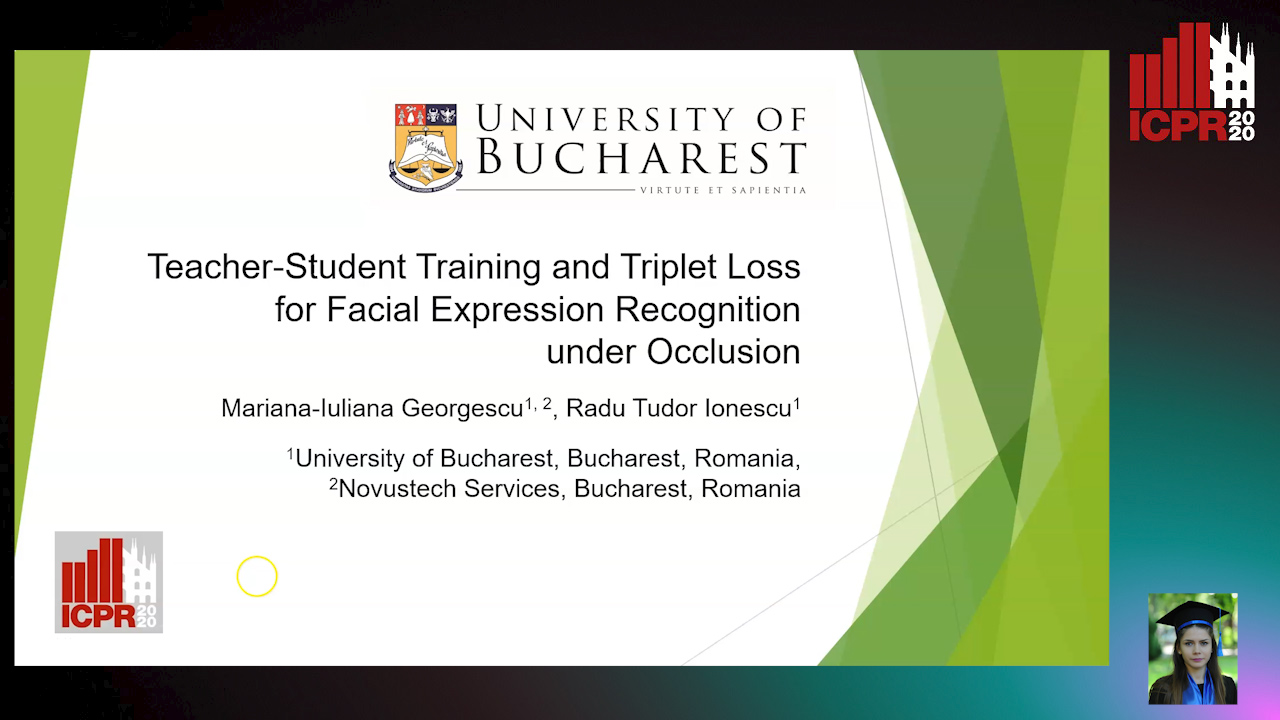
Auto-TLDR; Knowledge Distillation for Facial Expression Recognition under Occlusion
Towards Low-Bit Quantization of Deep Neural Networks with Limited Data
Yong Yuan, Chen Chen, Xiyuan Hu, Silong Peng
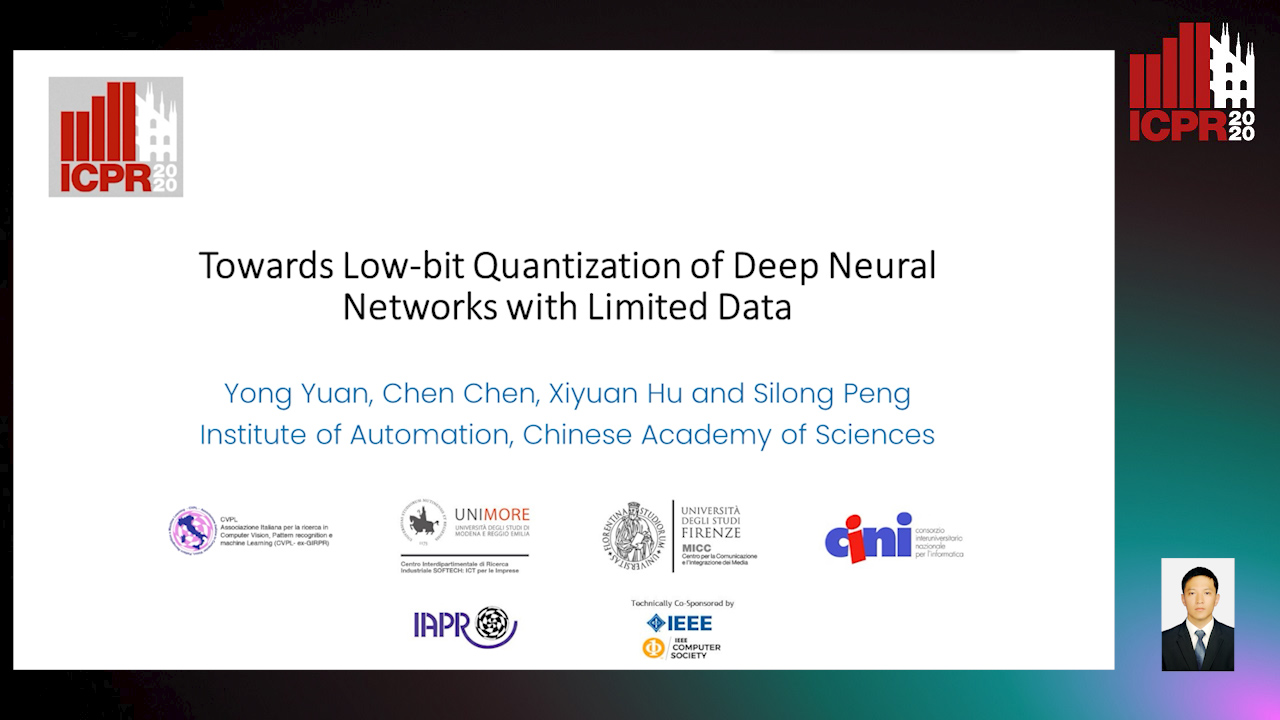
Auto-TLDR; Low-Precision Quantization of Deep Neural Networks with Limited Data
Abstract Slides Poster Similar
Norm Loss: An Efficient yet Effective Regularization Method for Deep Neural Networks
Theodoros Georgiou, Sebastian Schmitt, Thomas Baeck, Wei Chen, Michael Lew

Auto-TLDR; Weight Soft-Regularization with Oblique Manifold for Convolutional Neural Network Training
Abstract Slides Poster Similar
Learning Sparse Deep Neural Networks Using Efficient Structured Projections on Convex Constraints for Green AI
Michel Barlaud, Frederic Guyard

Auto-TLDR; Constrained Deep Neural Network with Constrained Splitting Projection
Abstract Slides Poster Similar
Adaptive Distillation for Decentralized Learning from Heterogeneous Clients
Jiaxin Ma, Ryo Yonetani, Zahid Iqbal
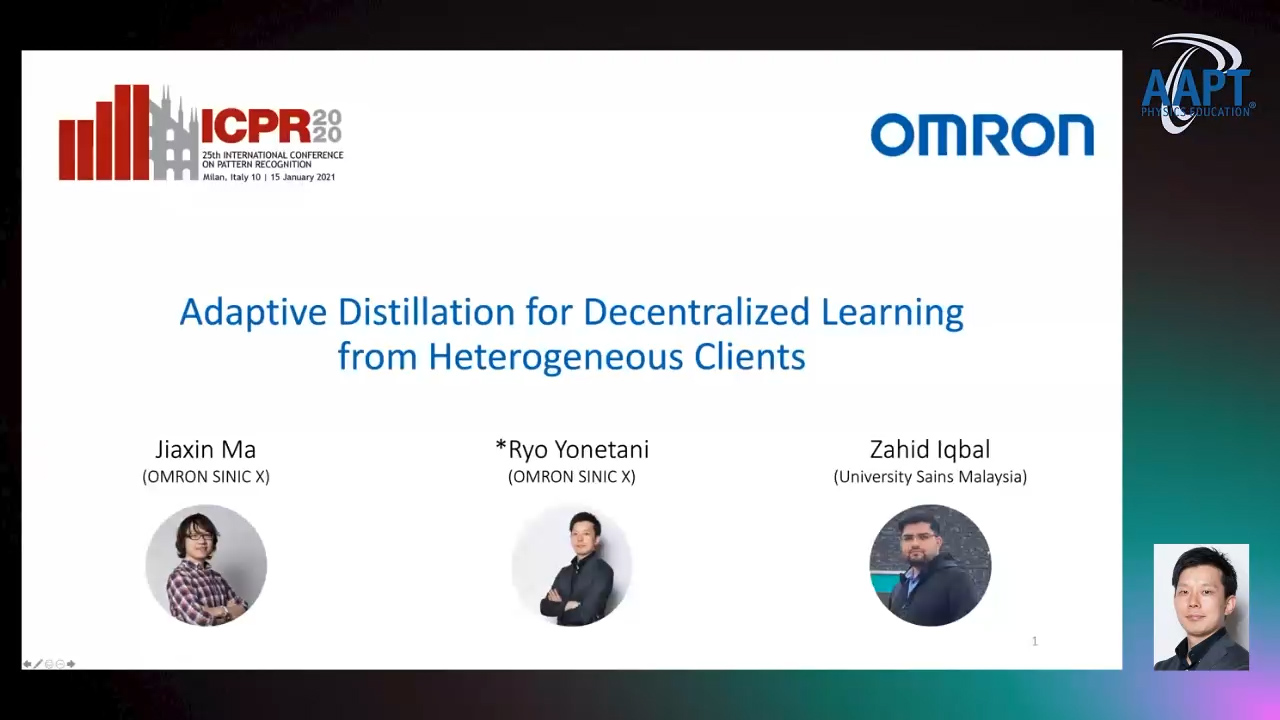
Auto-TLDR; Decentralized Learning via Adaptive Distillation
Abstract Slides Poster Similar
Supervised Domain Adaptation Using Graph Embedding
Lukas Hedegaard, Omar Ali Sheikh-Omar, Alexandros Iosifidis

Auto-TLDR; Domain Adaptation from the Perspective of Multi-view Graph Embedding and Dimensionality Reduction
Abstract Slides Poster Similar
Neuron-Based Network Pruning Based on Majority Voting
Ali Alqahtani, Xianghua Xie, Ehab Essa, Mark W. Jones

Auto-TLDR; Large-Scale Neural Network Pruning using Majority Voting
Abstract Slides Poster Similar
Local Clustering with Mean Teacher for Semi-Supervised Learning
Zexi Chen, Benjamin Dutton, Bharathkumar Ramachandra, Tianfu Wu, Ranga Raju Vatsavai

Auto-TLDR; Local Clustering for Semi-supervised Learning
Slimming ResNet by Slimming Shortcut
Donggyu Joo, Doyeon Kim, Junmo Kim

Auto-TLDR; SSPruning: Slimming Shortcut Pruning on ResNet Based Networks
Abstract Slides Poster Similar
Resource-efficient DNNs for Keyword Spotting using Neural Architecture Search and Quantization
David Peter, Wolfgang Roth, Franz Pernkopf

Auto-TLDR; Neural Architecture Search for Keyword Spotting in Limited Resource Environments
Abstract Slides Poster Similar
Beyond Cross-Entropy: Learning Highly Separable Feature Distributions for Robust and Accurate Classification
Arslan Ali, Andrea Migliorati, Tiziano Bianchi, Enrico Magli

Auto-TLDR; Gaussian class-conditional simplex loss for adversarial robust multiclass classifiers
Abstract Slides Poster Similar
A Close Look at Deep Learning with Small Data

Auto-TLDR; Low-Complex Neural Networks for Small Data Conditions
Abstract Slides Poster Similar
HFP: Hardware-Aware Filter Pruning for Deep Convolutional Neural Networks Acceleration
Fang Yu, Chuanqi Han, Pengcheng Wang, Ruoran Huang, Xi Huang, Li Cui

Auto-TLDR; Hardware-Aware Filter Pruning for Convolutional Neural Networks
Abstract Slides Poster Similar
MaxDropout: Deep Neural Network Regularization Based on Maximum Output Values
Claudio Filipi Gonçalves Santos, Danilo Colombo, Mateus Roder, Joao Paulo Papa

Auto-TLDR; MaxDropout: A Regularizer for Deep Neural Networks
Abstract Slides Poster Similar
Can Data Placement Be Effective for Neural Networks Classification Tasks? Introducing the Orthogonal Loss
Brais Cancela, Veronica Bolon-Canedo, Amparo Alonso-Betanzos

Auto-TLDR; Spatial Placement for Neural Network Training Loss Functions
Abstract Slides Poster Similar
Semi-Supervised Class Incremental Learning
Alexis Lechat, Stéphane Herbin, Frederic Jurie

Auto-TLDR; incremental class learning with non-annotated batches
Abstract Slides Poster Similar
Compression Strategies and Space-Conscious Representations for Deep Neural Networks
Giosuè Marinò, Gregorio Ghidoli, Marco Frasca, Dario Malchiodi

Auto-TLDR; Compression of Large Convolutional Neural Networks by Weight Pruning and Quantization
Abstract Slides Poster Similar
A Discriminant Information Approach to Deep Neural Network Pruning

Auto-TLDR; Channel Pruning Using Discriminant Information and Reinforcement Learning
Abstract Slides Poster Similar
Dynamic Multi-Path Neural Network
Yingcheng Su, Yichao Wu, Ken Chen, Ding Liang, Xiaolin Hu

Auto-TLDR; Dynamic Multi-path Neural Network
Is the Meta-Learning Idea Able to Improve the Generalization of Deep Neural Networks on the Standard Supervised Learning?

Auto-TLDR; Meta-learning Based Training of Deep Neural Networks for Few-Shot Learning
Abstract Slides Poster Similar
Pretraining Image Encoders without Reconstruction Via Feature Prediction Loss
Gustav Grund Pihlgren, Fredrik Sandin, Marcus Liwicki

Auto-TLDR; Feature Prediction Loss for Autoencoder-based Pretraining of Image Encoders
Graph-Based Interpolation of Feature Vectors for Accurate Few-Shot Classification
Yuqing Hu, Vincent Gripon, Stéphane Pateux

Auto-TLDR; Transductive Learning for Few-Shot Classification using Graph Neural Networks
Abstract Slides Poster Similar
Smart Inference for Multidigit Convolutional Neural Network Based Barcode Decoding
Duy-Thao Do, Tolcha Yalew, Tae Joon Jun, Daeyoung Kim

Auto-TLDR; Smart Inference for Barcode Decoding using Deep Convolutional Neural Network
Abstract Slides Poster Similar
Contextual Classification Using Self-Supervised Auxiliary Models for Deep Neural Networks
Sebastian Palacio, Philipp Engler, Jörn Hees, Andreas Dengel

Auto-TLDR; Self-Supervised Autogenous Learning for Deep Neural Networks
Abstract Slides Poster Similar
MINT: Deep Network Compression Via Mutual Information-Based Neuron Trimming
Madan Ravi Ganesh, Jason Corso, Salimeh Yasaei Sekeh
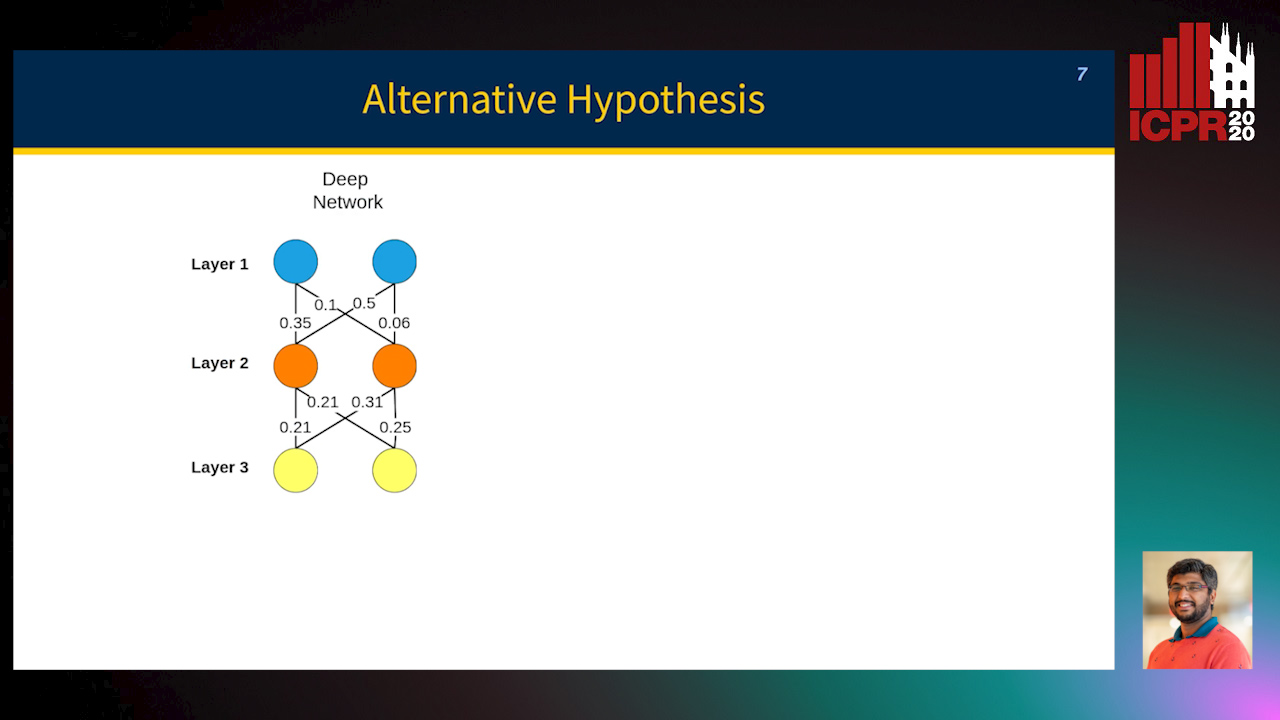
Auto-TLDR; Mutual Information-based Neuron Trimming for Deep Compression via Pruning
Abstract Slides Poster Similar
Softer Pruning, Incremental Regularization
Linhang Cai, Zhulin An, Yongjun Xu

Auto-TLDR; Asymptotic SofteR Filter Pruning for Deep Neural Network Pruning
Abstract Slides Poster Similar
A Joint Representation Learning and Feature Modeling Approach for One-Class Recognition
Pramuditha Perera, Vishal Patel

Auto-TLDR; Combining Generative Features and One-Class Classification for Effective One-class Recognition
Abstract Slides Poster Similar
Image Representation Learning by Transformation Regression
Xifeng Guo, Jiyuan Liu, Sihang Zhou, En Zhu, Shihao Dong

Auto-TLDR; Self-supervised Image Representation Learning using Continuous Parameter Prediction
Abstract Slides Poster Similar
Multi-Order Feature Statistical Model for Fine-Grained Visual Categorization
Qingtao Wang, Ke Zhang, Shaoli Huang, Lianbo Zhang, Jin Fan

Auto-TLDR; Multi-Order Feature Statistical Method for Fine-Grained Visual Categorization
Abstract Slides Poster Similar
Stochastic Label Refinery: Toward Better Target Label Distribution
Xi Fang, Jiancheng Yang, Bingbing Ni

Auto-TLDR; Stochastic Label Refinery for Deep Supervised Learning
Abstract Slides Poster Similar
Nearest Neighbor Classification Based on Activation Space of Convolutional Neural Network
Xinbo Ju, Shuo Shao, Huan Long, Weizhe Wang

Auto-TLDR; Convolutional Neural Network with Convex Hull Based Classifier
Exploiting Distilled Learning for Deep Siamese Tracking
Chengxin Liu, Zhiguo Cao, Wei Li, Yang Xiao, Shuaiyuan Du, Angfan Zhu

Auto-TLDR; Distilled Learning Framework for Siamese Tracking
Abstract Slides Poster Similar
Feature-Dependent Cross-Connections in Multi-Path Neural Networks
Dumindu Tissera, Kasun Vithanage, Rukshan Wijesinghe, Kumara Kahatapitiya, Subha Fernando, Ranga Rodrigo

Auto-TLDR; Multi-path Networks for Adaptive Feature Extraction
Abstract Slides Poster Similar
Filter Pruning Using Hierarchical Group Sparse Regularization for Deep Convolutional Neural Networks
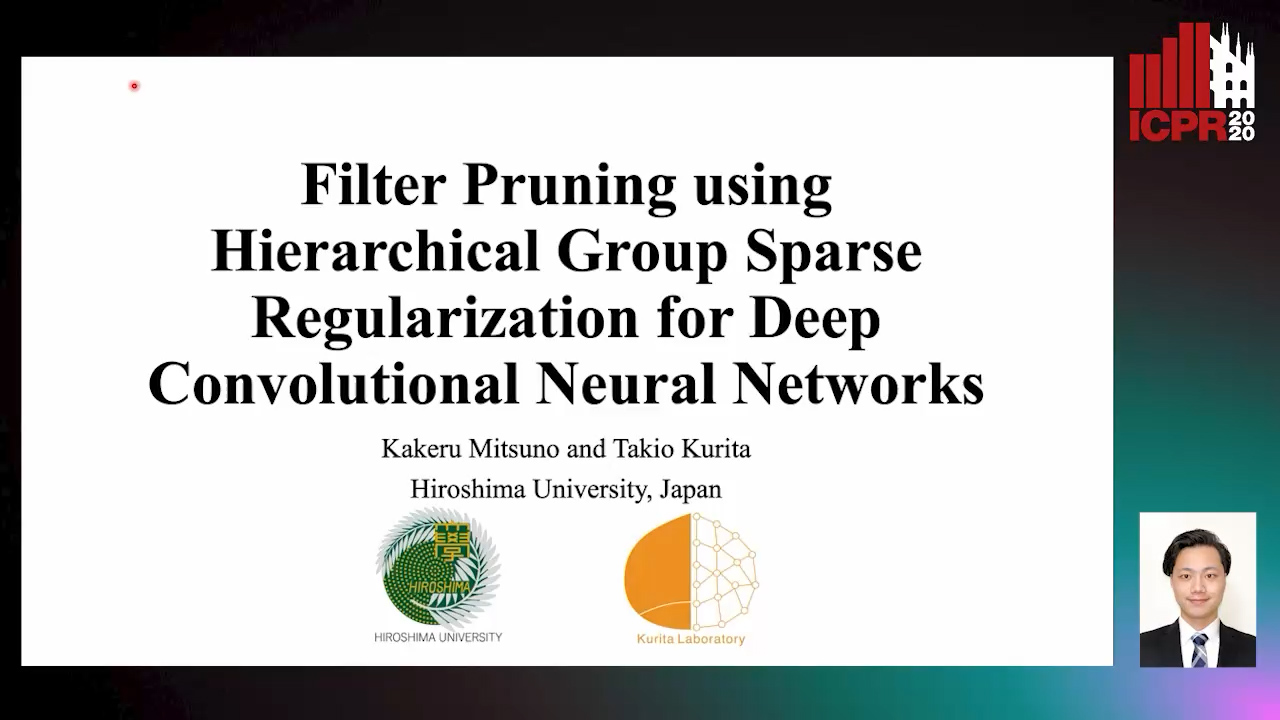
Auto-TLDR; Hierarchical Group Sparse Regularization for Sparse Convolutional Neural Networks
Abstract Slides Poster Similar
Multi-Modal Deep Clustering: Unsupervised Partitioning of Images

Auto-TLDR; Multi-Modal Deep Clustering for Unlabeled Images
Abstract Slides Poster Similar
On Resource-Efficient Bayesian Network Classifiers and Deep Neural Networks
Wolfgang Roth, Günther Schindler, Holger Fröning, Franz Pernkopf

Auto-TLDR; Quantization-Aware Bayesian Network Classifiers for Small-Scale Scenarios
Abstract Slides Poster Similar
Neural Compression and Filtering for Edge-assisted Real-time Object Detection in Challenged Networks
Yoshitomo Matsubara, Marco Levorato

Auto-TLDR; Deep Neural Networks for Remote Object Detection Using Edge Computing
Abstract Slides Poster Similar